Revisiting the story of a hookah with a 300-year-old history of maritime trade, made in a small port town in Kozhikode, is just one of many interventions by concerned residents in Kerala to conserve and preserve the heritage of the State.
They are making determined efforts to raise awareness of the heritage on a micro-level and involve local people to understand the importance of conserving their own histories.
MetroPlus speaks to four such people who are making a difference through organisations and individual efforts to focus attention on rapidly vanishing stories of craft, architecture, space, arts and culture.
Sharat Sunder Rajeev
For this conservation architect, academic and author, paintings and visual art opened the door to a rich heritage of art and craft, and the lives of its practitioners in Travancore.
As a child, Sharat’s grandparents used to tell him stories about their family, renowned craftsmen who were builders of temples and ivory carvers.
Later, as a student of architecture, he noted that there was scarcely any literature on the craftsmen. Their lives seemed far away from the pages of documented history. Initially, he began meeting veteran artisans to document their oral history. “I was curious to understand what was the knowledge system, how it was passed from one generation to the other. Was it written down or orally passed on in the form of songs or instructions? Or was it learned on the job?”
Sharat Sunder Rajeev
| Photo Credit:
Special arrangement
When he began reading archival documents, he came across pieces of tangible evidence to back the narration of the craftsmen. Sharat’s father’s paternal grandfather, Ramakrishnan Achari, was one of the last Durbar artists of Travancore. In a break from the family tradition of craftsmen, he had decided to become an artist and studied at the Madras School of Arts. However, the going was not easy. A commission to paint Durbar physician Dr Peter Lakshmanan was granted only after the artist’s certificates were verified. At every stage of the painting, the artist had to take the portrait to the physician’s house to get his approval.
“Things changed once he becomes established. But his struggle has been documented in his journal. That made me curious to learn about these unsung artisans who even made the ivory throne that made Travancore a byword for fine ivory carvings,” says Sharat.
His blogs and writing coalesced into a book — The King’s Craftsmen.
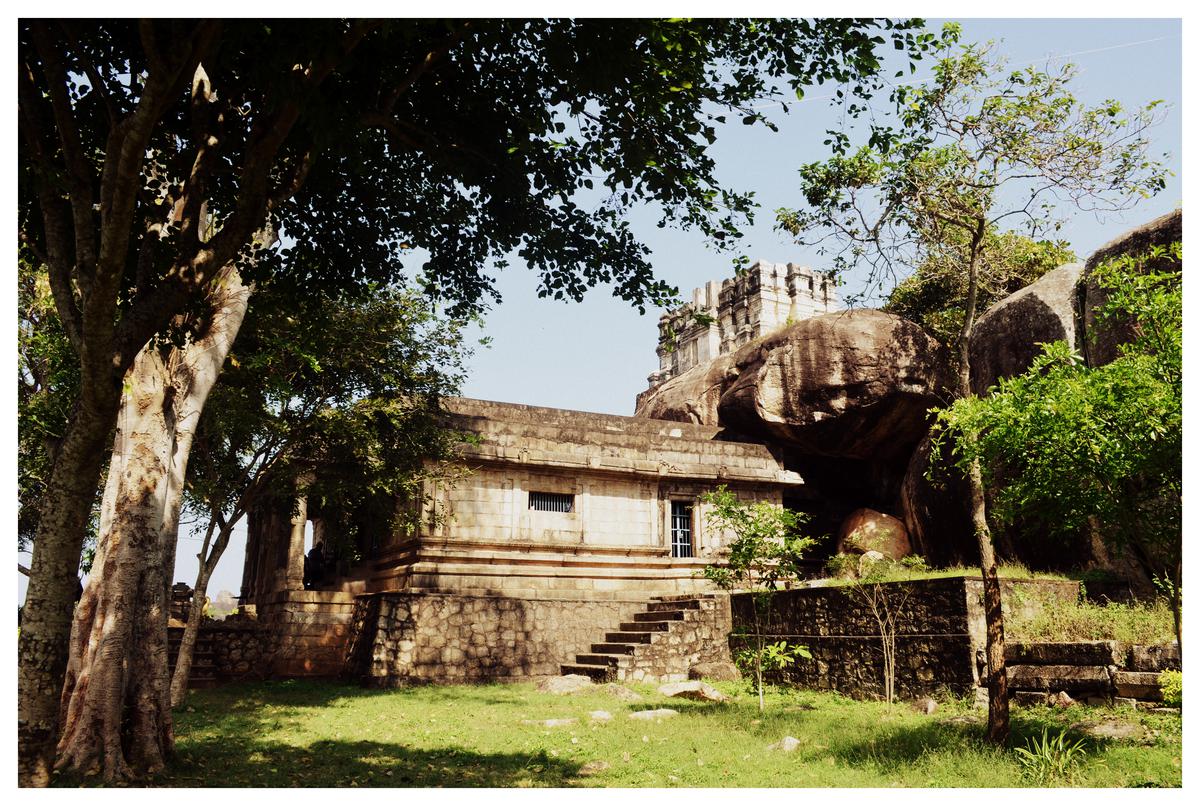
Chitral in Kanyakumari district.
| Photo Credit:
Sharat Sunder Rajeev
Sharat, a much sought-after guide for heritage walks in and around the city, collates nuggets of information about people, buildings, works of arts, paintings and more into captivating narratives, giving them a context and time.
At present, Sharat is delving into the history of photography in Travancore. Another area of interest is the architecture of Nanjinad, most of which is in Kanyakumari district, once a part of Travancore.
Manoj Kini
Did you know that the first railway station in Travancore was in Kollam? Or that the first flight landed in Ashramom Maidanam, again in Kollam? Or that the ‘English School’ (Model Boys High School) and Old Secretariat (Huzoor Kacheri), established by Swathi Thirunal, were in Kollam?
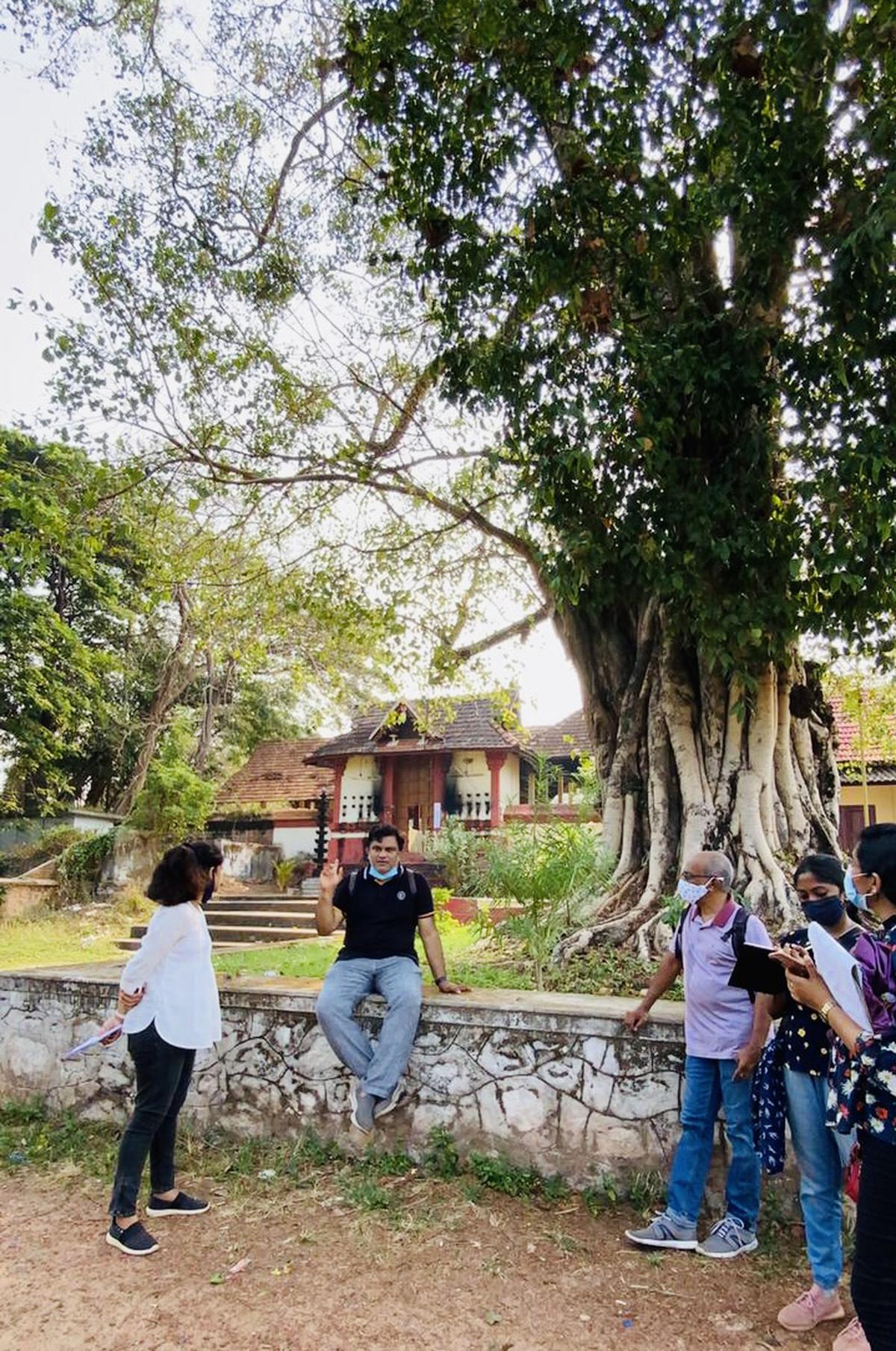
Urban architect and academic Manoj Kini on a heritage walk in Kollam
| Photo Credit:
SPECIAL ARRANGEMENT
“That is not all. The finest tobacco, called Japanam Pokiyila (Jaffna tobacco), used to come from Jaffna in Sri Lanka to the Kollam port, from where it used to be sent to other parts of the world through water ways. It was one of the busiest ports in the south. The Chinese, the Arabs, the Phoenicians, the Dutch, the Portuguese and the British coveted the port and the city. Unfortunately, many of those from the district have turned their back on the heritage of Kollam,” laments Manoj, an architect and urban conservationist who is now director of the Muziris Heritage Project.
The warehouse used to store the tobacco was known Pukayila Pandala Shala. He feels that Chamakkada, the main market in Kollam, developed around this warehouse.
A ware house that was once known as Pukayila Pandala Shala.
| Photo Credit:
SPECIAL ARRANGEMENT
He wonders how many people are aware that till the Pamban bridge was closed to passenger trains, it was possible to travel by train to Sri Lanka from Kollam and Kottayam, all for₹36. “One could go to Rameswaram and take a boat to Jaffna and then to Colombo. It was that easy and there was a lot of trade between Kollam and Jaffna,” he adds.
“Several ancient temples, churches and Tangasseri were in my neighbourhood and my father, Kumar Kini, a teacher and history enthusiast, used to take me and my sister to these places.”
A keen student of history, Manoj found his interests intersecting as an architect. In 2015, he began conducting heritage walks to help residents connect with their surroundings. He says his present assignment has helped connect Kollam with the Spice route, promoted by Kerala Tourism.
The Residency Bungalow in Kollam is now a guest house.
| Photo Credit:
SPECIAL ARRANGEMENT
“It connects port towns between Kozhikode and Kollam. Hopefully, that should see a push to conserve some of the heritage buildings in the district. In the last 10 years, at least 150 such buildings have been demolished.”
Manoj hopes to turn his collection of matter on the district into a book.
Sruthin Lal
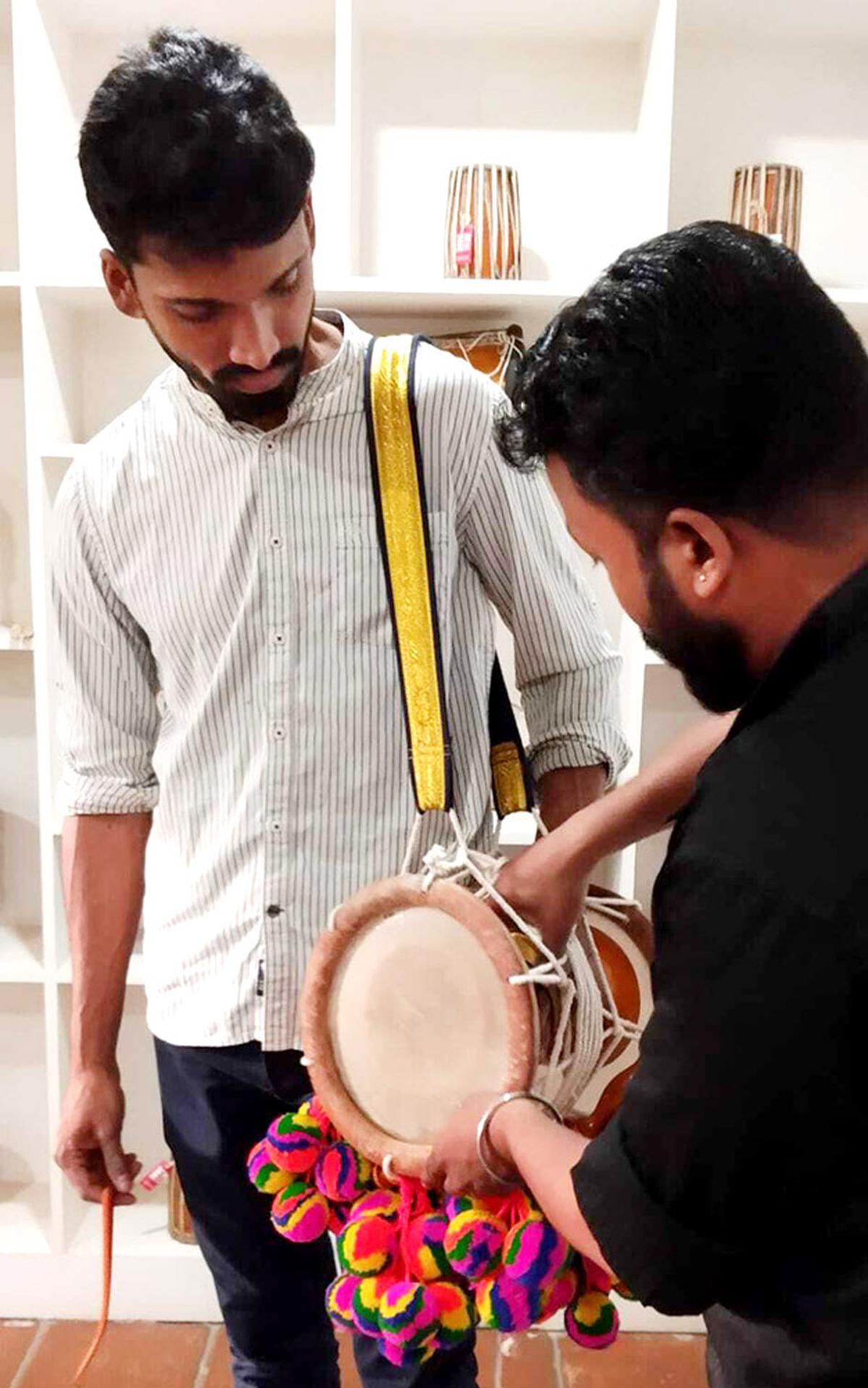
Sruthin Lal
| Photo Credit:
Special arrangement
In the late forties and early fifties of the last century, when Jews migrated from Yemen to Israel, one of their prized possessions was a hookah that they called Nargila in Hebrew. Not many are aware that this hookah was made in Koyilandy, once a bustling port near Kozhikode and that the name came from the Sanskrit word for coconut, nalikeram.
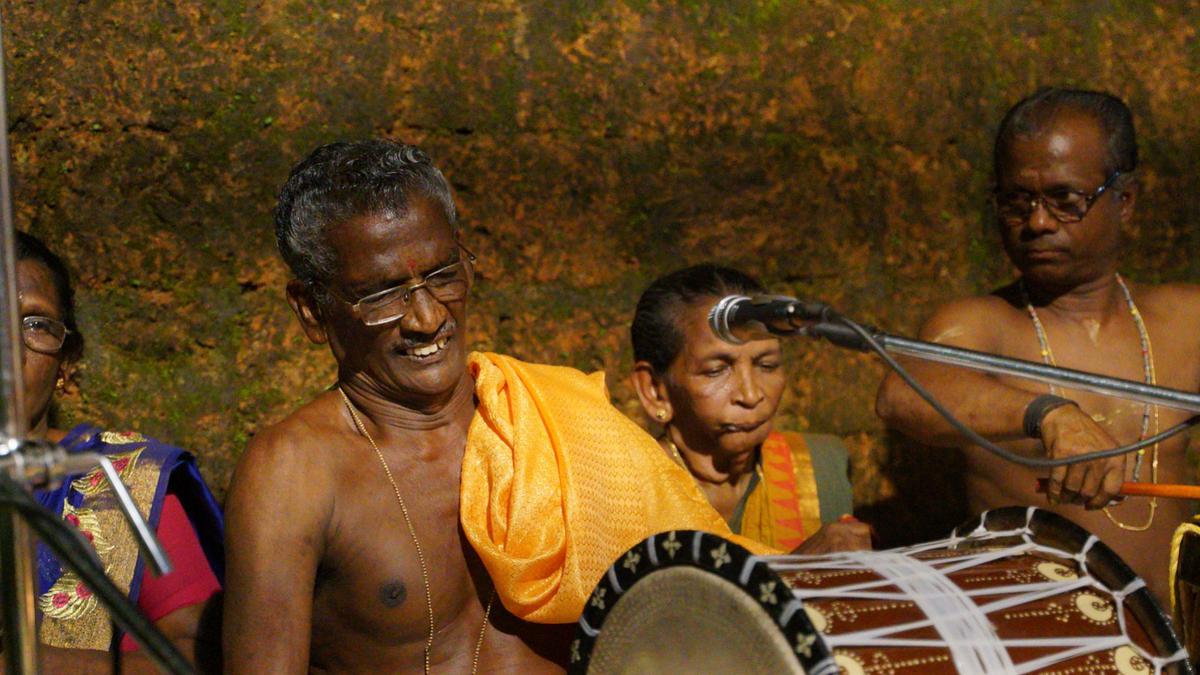
Chanthu Panikkar performing Balikkala.
| Photo Credit:
Special arrangement
Archival and Research Project (ARPO, @arpo.in) was co-founded in 2021 by Kozhikode-based Sruthin to preserve and promote the music, language and dialect of tribal and other marginalised communities through projects such as LoreKeepers and EarthLore.
What began as an effort to archive and document Kerala’s cultural memories and heritage, by digitalising and creating multi-media content, has now diversified into conservation architecture and intervention activities to promote dying art forms and craftsmanship.
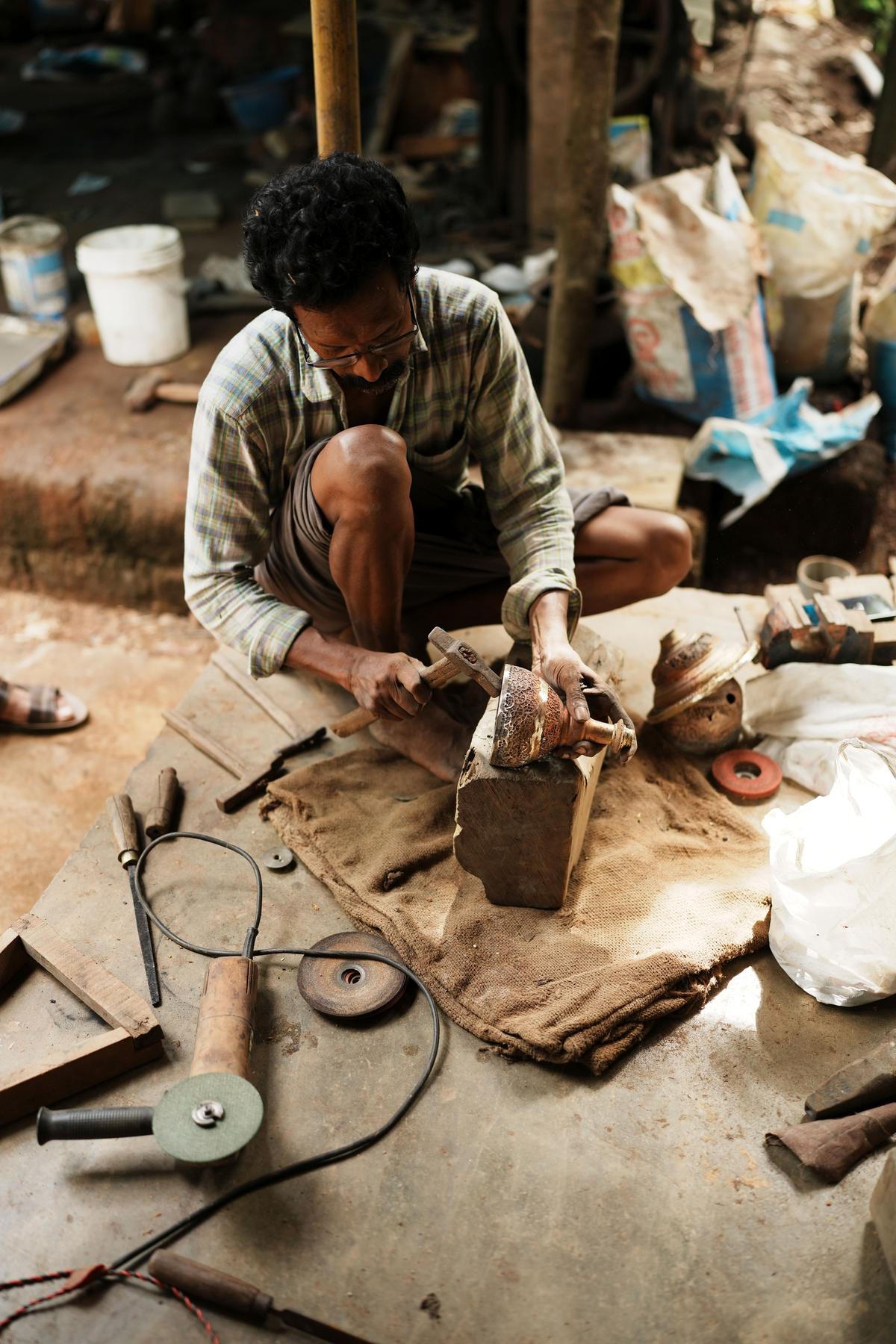
A skilled craftsman making the Malabar hookah in Koilandy.
| Photo Credit:
Special arrangement
When Sruthin, executive director of ARPO, heard about the Malabar hookah, he travelled to Koyilandi, about 25 km from Kozhikode, to make a video. They got a shock when the skilled craftsman, belonging to a community called Moosharis, told them that the craft with a 300-to 400-year old tradition would die out within a year or two as the Ukraine war had put a stop to exports and there was no local market for it.
Malabar hookah made in Koilandy
| Photo Credit:
SPECIAL ARRANGEMENT
Apparently Yemeni merchants in the 16th and 17th century had commissioned local craftsmen in Kerala to make these hookahs for them. “Made with brass, bronze and, sometimes, with silver inlay, these hookahs had coconut shells in its manufacture. Once, this was a thriving cottage industry with several buyers in West Asia. We helped rebrand the hookah and start an Instagram page for it (@malabar-hookah), to tell the story of its creation. We were able to generate quite a good market for it with buyers ranging from the Mexican Ambassador to India to author and historian Manu S Pillai,” explains Sruthin.
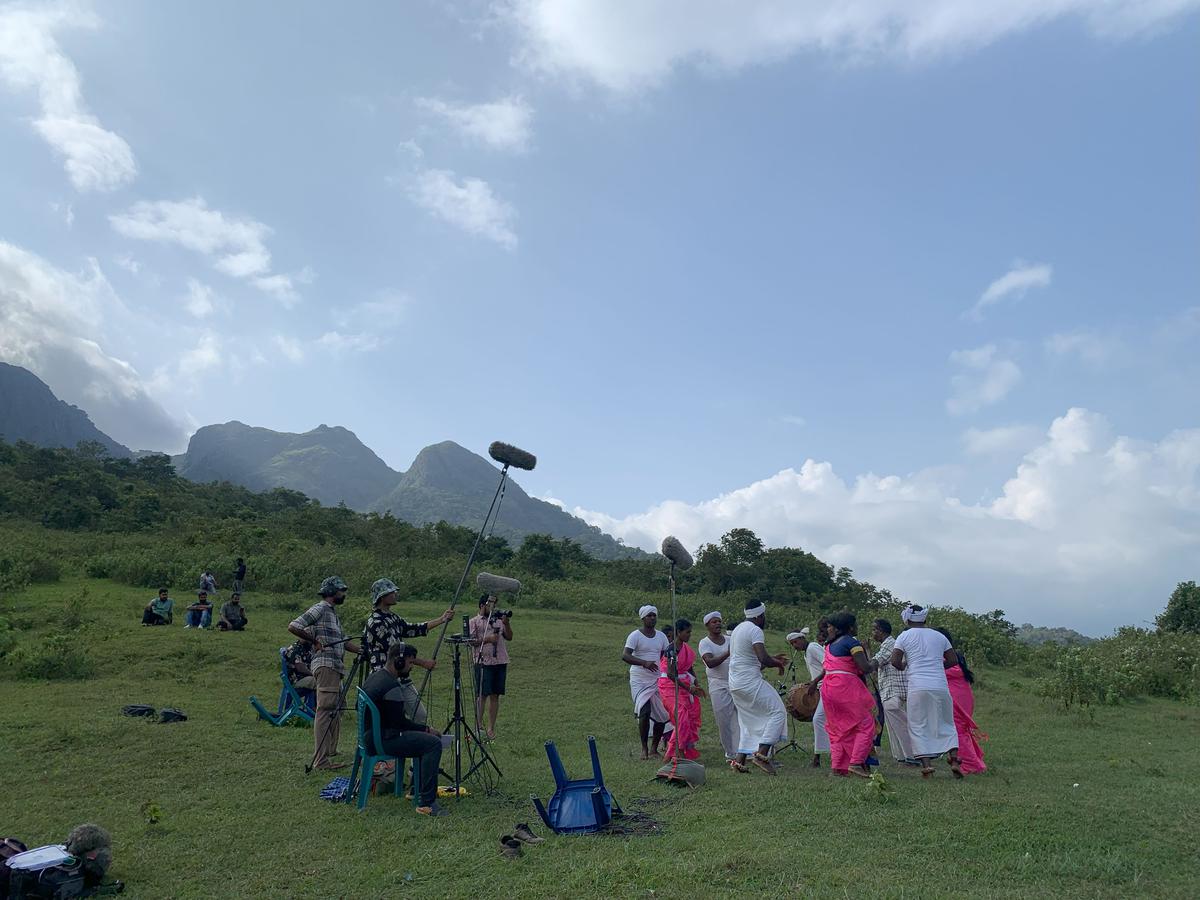
A tribal dance and song of the Irular being documented under the auspices of ARPO.
| Photo Credit:
Special arrangement
Lorekeepers, supported by the Faizal and Shabana Foundation, aims at documenting songs and stories to create a repository. Families were requested to use their phones to record senior citizens’ stories and music. They were able to collect 500 to 600 songs and stories, mostly from Northern Malabar. They want to work with schools and camps to keep the legacy alive.
“There are many tribal communities in Kerala and each has its language, musical instruments and cultural practices,” says Sruthin.
In the first season, they worked with the Irular of Attapadi and the Kattunaickers of Thirunelli to document their oral heritage and then went on to help them collaborate with international artistes, provide platforms for performances, workshops etc. “These efforts involved a great deal of handholding including helping them get passports!” says Sruthin.
The plan is to replicate the efforts for different tribal communities in the State.
“What we archived was also different dialects. Just the documentation motivates them. It was a confidence-building measure on many levels and restored their pride in their arts,” recalls Sruthin. He wants to involve schools and teachers to weave in the songs and stories into their daily lives.
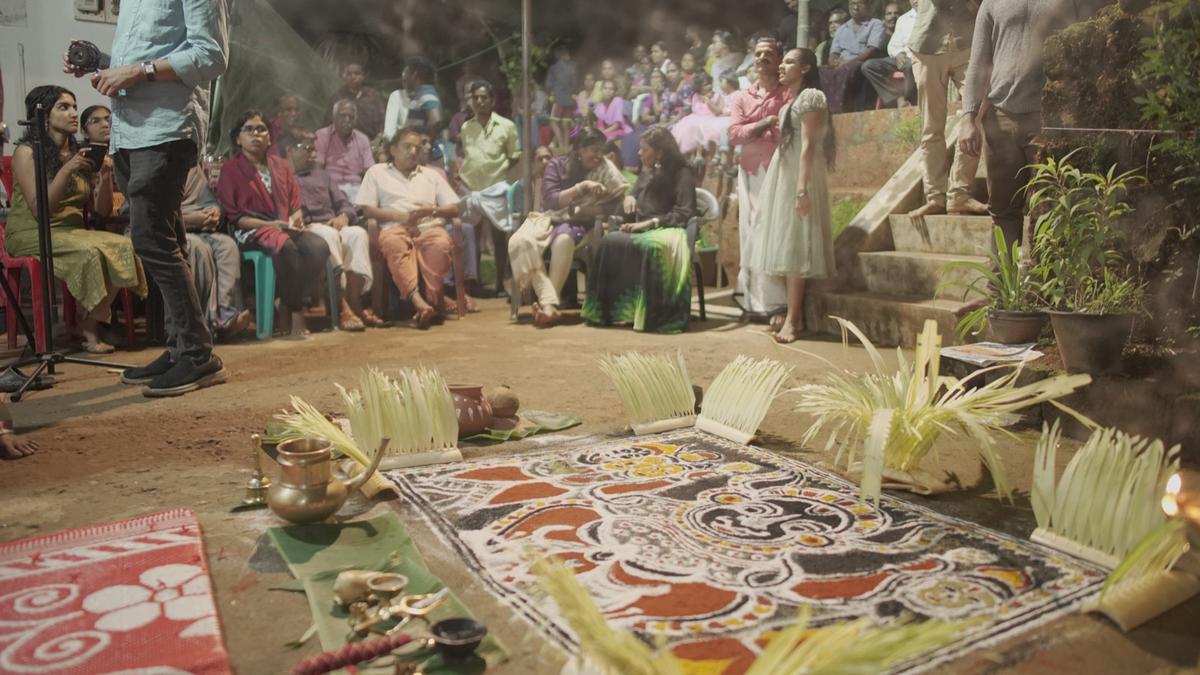
Balikkala in progress.
| Photo Credit:
Special arrangement
Similarly, they revived a ritual of the Malayar community called ‘balikkala’ that had not been performed for more than 40 years. Chanthu Panicker is perhaps the only one who remembers this in addition to four or five others. “We requested him to perform it and there was a huge gathering at his house in Perambra [in Kozhikode] to see this. Even members of the community, below the age of 40, who had not seen this came to see the seven-hour performance.”
Sruthin points out that Kerala was once a hub of global trading. “No one is talking about it. Within two years, we have found a treasure trove of cultural heritage. If the government were to set its mind to it, every place in the State would have so many stories to narrate.”
“Malayalis are an outward looking society, that’s a good thing but we often forget our roots in the process. We have to change the way we think, and learn to value what we have. There is so much in Kerala to tap for tourism and for that socio-economic and political interventions are needed.”
INTACH, Palakkad
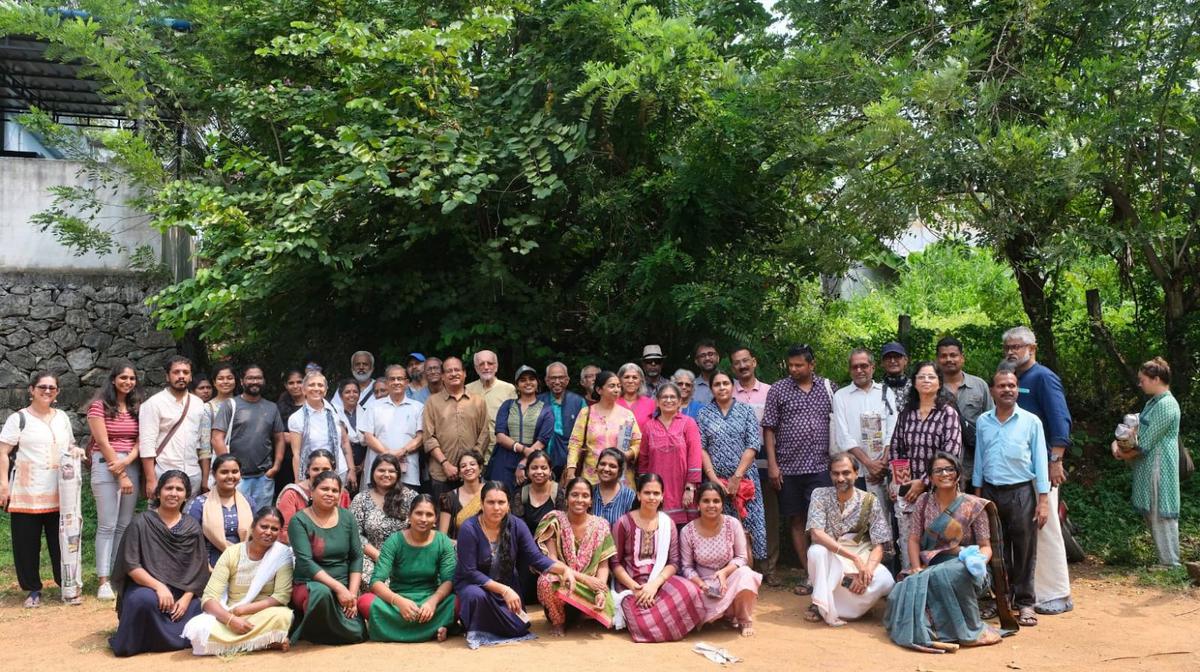
Intach Palakkad chapter’s curated trip to three weaving centres on the banks of the Nila.
| Photo Credit:
SPECIAL ARRANGEMENT
Instead of merely a presence, the INTACH chapter under Arun Narayanan, convener of the Palakkad chapter, and his team are at the forefront of activities to bring heritage into conversations and engage local residents with their own narratives.
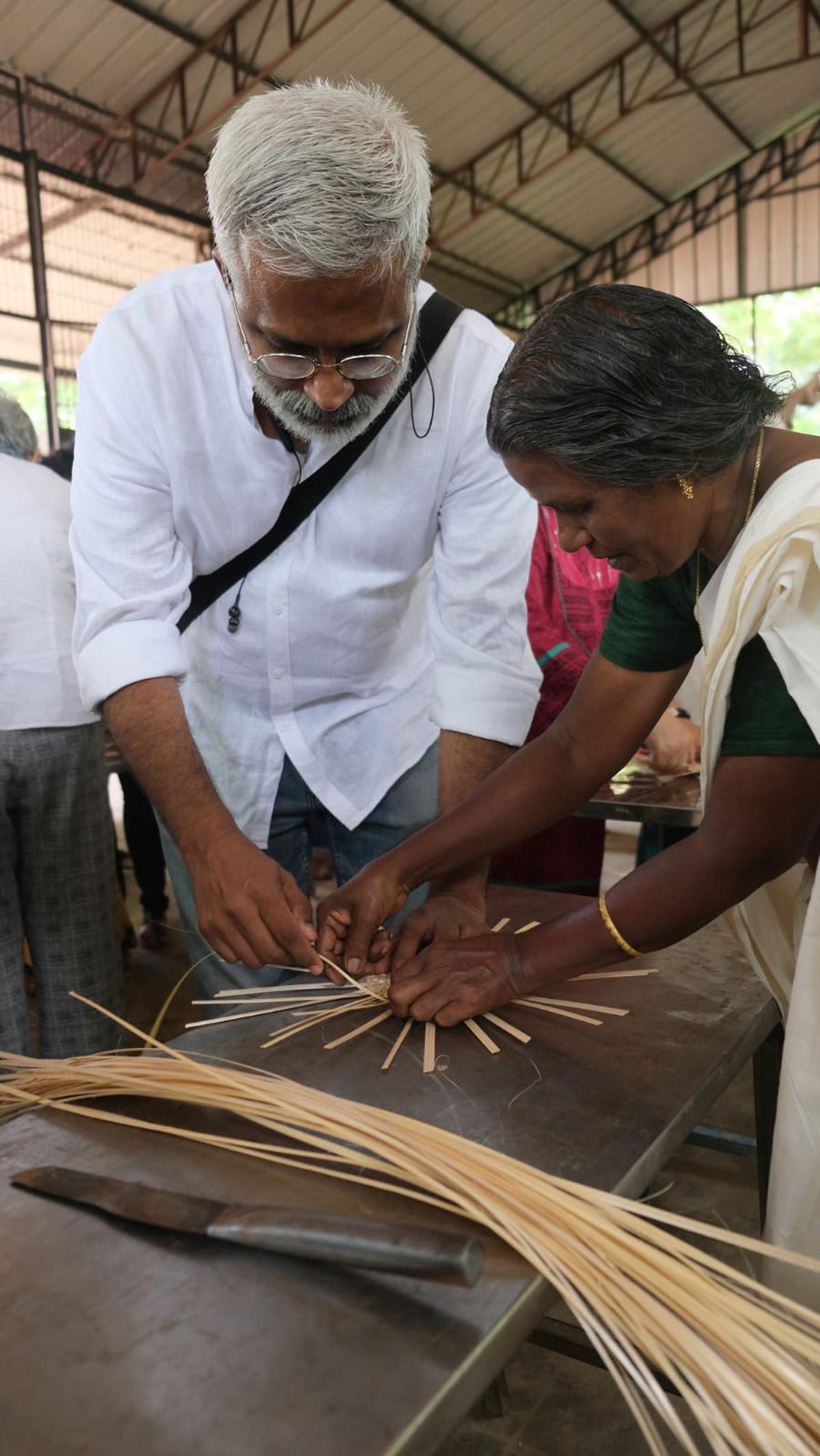
Intach Palakkad chapter’s at a basketry weaving centre in Pazhayannur.
| Photo Credit:
SPECIAL ARRANGEMENT
Post-pandemic, the chapter conducted a curated tour to understand the weaving tradition in Palakkad district and its neighbourhood. Prior to that, they had done “sight-seeing trips to heritage homes and historic places,” says Arun.
“During the trip, we took care to see that the food we had was in some way connected to the theme of the tour or the place we were visiting,” he adds.
The Nila Weaving Tour, a curated trip on October 28, was a journey to “explore some of the historic hand-weaving traditions of the Nila,” he states in a post. Jointly organised by the chapters of Thrissur and Palakkad, 42 people travelled to Pazhayannur, Killimangalam and Kuthampully, each with a unique weaving legacy.
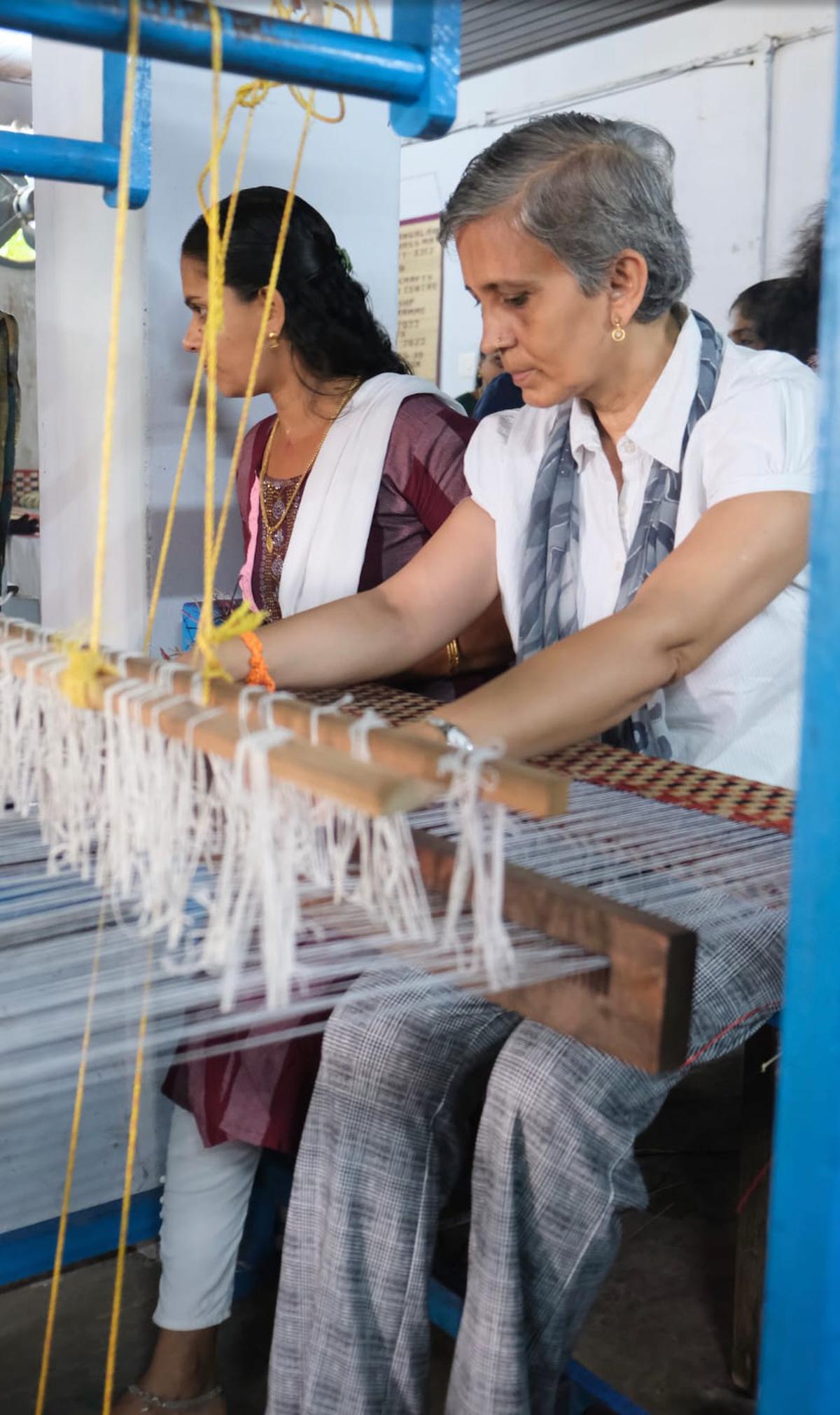
A curated trip organised by the Palakkad chapter of INTACH had the members visiting the weaving village of Kuthampully, near Thrissur.
| Photo Credit:
SPECIAL ARRANGEMENT
The trip began with the idea of a visit to Kuthampully. But since weaving fabric is a complex process, they decided to understand the process of weaving from basketry onwards, one of the oldest weaving techniques in the world. The bamboo is spliced into thin malleable strips to make the baskets, that are so essential in a farming household. An integral part of an agrarian eco-system, basket weavers are now in dire straits due to rapid urbanisation.
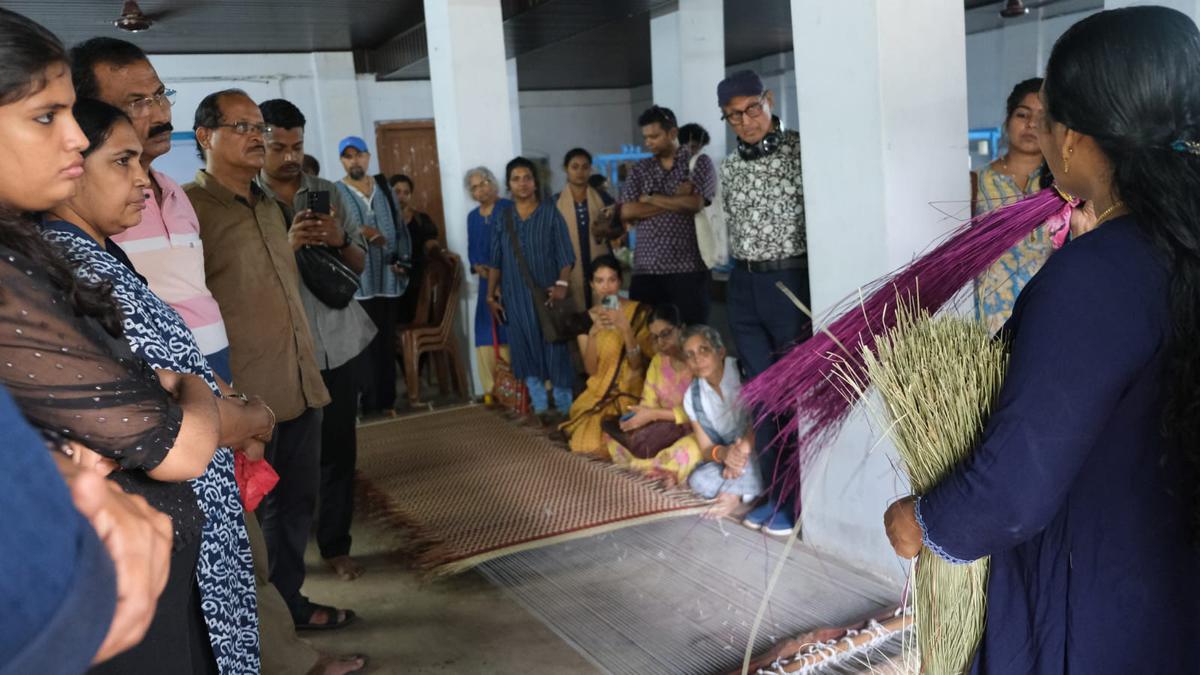
The Palakkad chapter of Intach arranged a trip to Killimangalam to see mats being woven from grass.
| Photo Credit:
SPECIAL ARRANGEMENT
The next stop was Killimangalam, perhaps the only place in the district where grass is still woven into mats by eight women who have not let challenges stop them. Although there were several units on the banks of the Nila that used to weave the mats, mechanisation had dealt a blow to their craft.
The final destination was Kuthampully.
“As a conservation body, we realised that many of the skilled crafts people are not market savvy, technologically aware or financially savvy. They did not even have photographs of their products. That is the kind of intervention that is needed to keep these crafts alive,” explains Arun.
At the end of the tour led by textile expert Saumya Pande, the participants understood why weaving, which requires eight to nine processes, requires a community to sustain it and is never a process in isolation.
“Moreover, in order to access new markets, they need someone with the language skills to tell their stories. Unless we understand the legacy of weaving and the high levels of skill required, we cannot begin to appreciate it. Only then will the appreciation turn to empathy.”
He adds that weavers in places like Kuthampully and Pazhayannur, whose patrons were wealthy Namboodiri families of the area, could not sustain their livelihood once the patronage stopped..
“We are trying to understand the nuances of their work to learn what is the best way to bridge the gaps to keep the craft alive and sustainable.”